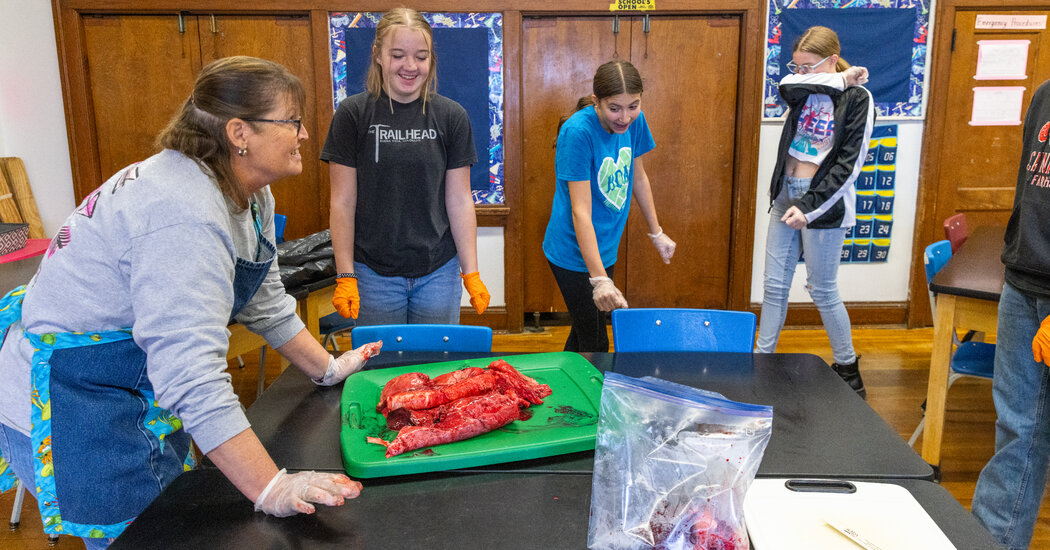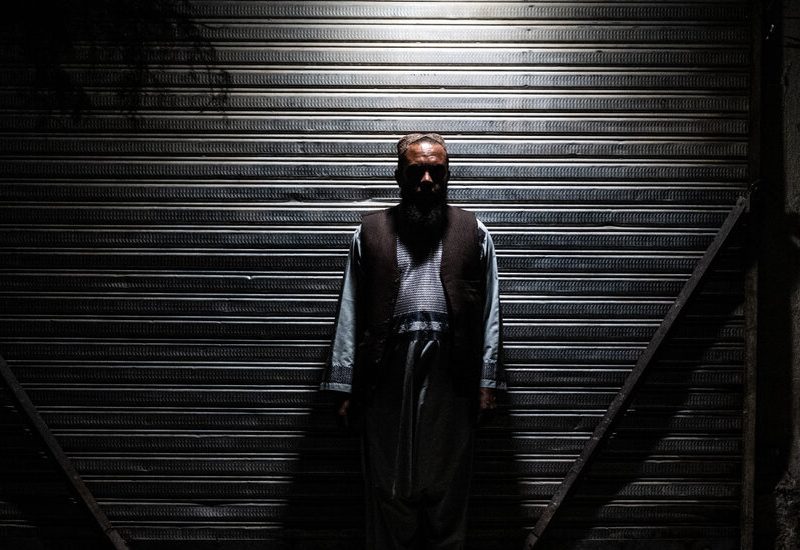At Maysville High School in Maysville, Mo., population 1,100, classes can be a little tough for the squeamish. Course work can involve assigned reading and algebra, but also a serious amount of blood and guts.
In 2022, the high school, an hour’s drive north of Kansas City, added an elective farm-to-table course run by a family and consumer science teacher, Amy Kanak, who works with an agriculture teacher, Brandi Ellis. Students were already learning to harvest and process livestock and wild game in their agriculture classes, and dissect the organs in science classes. The new course gives them the opportunity to cook meals using the harvested meat, a logical conclusion to the hard work of students in other classes. Ms. Kanak provides instruction on the tail end of the nose-to-tail process, in meal prepping, yield, budgeting and bulk cooking.
But it all starts with the most difficult and messiest part: culling animals and breaking them down. For many students, it’s their first time holding a knife and butchering. Ms. Kanak hopes that students will finish her course with an understanding of where their food comes from.
Ms. Ellis, who finds the classes to be vital in a time of rising grocery bills, said, “It forces them out of their comfort zone a little bit.”
Garrett Bray, then a senior at Maysville High School, pulling a freshly shot doe out of the forest in 2022 on his family’s property. Garrett learned hunting from his father and has been hunting from a young age.
Max DeShon, right, helping to drag two does out of Garrett’s pickup. Normally, Garrett would have field dressed the deer himself, but he was delivering them for students to learn processing and butchering.
Sophia Redman, a freshman in 2022, making an initial cut into a doe during an agriculture class.
Kaleb Jestes, left, processing deer meat and sorting it into different cuts during a farm-to-table foods class. A single deer averages 60 to 70 pounds of processed meat, making it an affordable option if you know how to hunt and process the animal yourself. Deer permits in Missouri, as of 2024, start at $7.50 for antlerless deer, or $18 for any deer. Youth tags cost even less.
Cindy Eggleston, an eighth grade science teacher, showing her students, from right, Keely Hardin, Makenzie Mason and Kella Morris, freshly harvested deer organs that will be part of an anatomy lesson on the heart and lungs.
Max Heintz collecting a rooster from a shed outside of the agriculture building at the start of the school day in December 2023. A local resident called Ms. Ellis, asking to donate seven overly aggressive roosters to the program. Ms. Ellis teaches students to cull and process chickens every year, often after raising them at the school.
Culled roosters bleeding into trash bins inside the agriculture building.
Makenzie, in 2023, left, taking the temperature of water as her classmates Nathan Schnitzer, center, and Bo May hold their culled chickens during an agriculture class. Different classes throughout the day participate in the entire process: culling, defeathering the carcasses by first dunking them into boiling hot water, and getting the birds ready to cook and eat by removing organs and feet.
Keagan Reeder, left, and Cooper Ray, center wearing a hat, stand by as Colton LeMunyon, in the Buffalo Bills hoodie, grills chicken the students marinated.
Colton digging into a deep-fried drumstick from a rooster that was culled by a class that morning. Students remarked on how tough the meat was, likely because of the age of the roosters.
From right, Kameron Keesaman, Robert Stinley Jr. and Bo Zeikle putting on their aprons at the beginning of a cooking class.
Frying chicken livers from the roosters that the agriculture classes had culled and processed the week prior.
Charlee Kimbrell, left, Robert Boucher, center, and the teacher Amy Kanak “cheers” their pan-fried chicken livers before tasting.
Chicken-fried deer steak topped with gravy alongside fried potatoes and green beans, prepared and served in Ms. Kanak’s class, the end of a process that began in the flatbed of a pickup.
Katie Currid contributed reporting.



